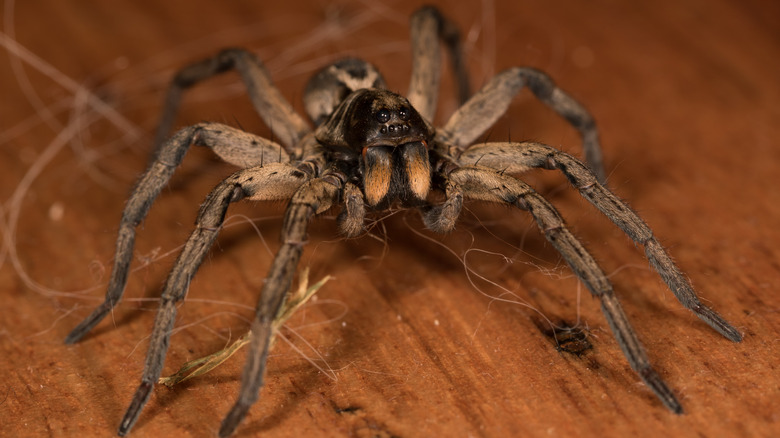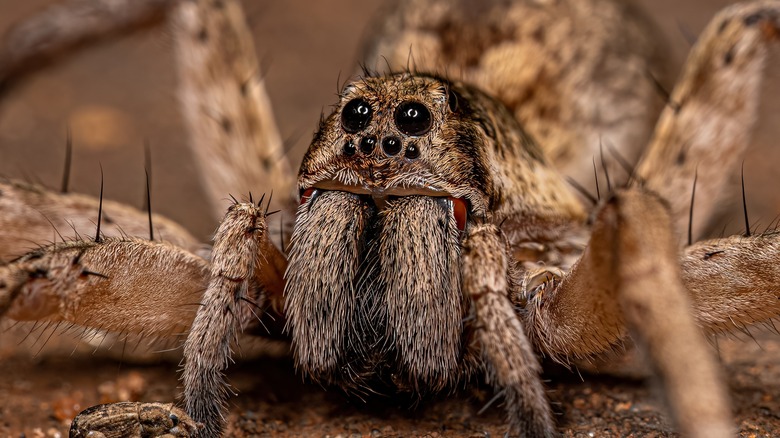Check These Common Areas To See If Wolf Spiders Have Invaded Your Home
Whether it's an army of ants or a cobweb full of spiders, nobody wants to find that a pest has invaded their home. This is especially true for wolf spiders, one of the most commonly found spiders in homes around the world. While their bite is not known to cause medical issues in humans, wolf spiders are seen so frequently because of their species' ability to thrive in a variety of different climates.
Wolf spiders often find their way into homes while looking for shelter or food. They are ambush predators, meaning that they hide out and spring once insects are close enough to them. That being said, their favorite hiding spots in a home are typically moist areas of basements, garages, behind furniture, in house plants, and wall interiors. If you suspect that wolf spiders are in your home, it's best to look in these common places, as well as places where you have seen other pests. A wolf spider's diet consists of insects like grasshoppers, crickets, and cockroaches, so if they are nearby, it's possible that a wolf spider is too.
Identifying them
Like many other arachnid species, wolf spiders are typically found in dark, moist crevices of the home. They also tend to look similar to other species. How do you differentiate wolf spiders from hobo spiders and other common eight-legged pests?
Wolf spiders easily camouflage into shadows because of their dark brown and black coloration. On average, these natural predators can be anywhere between a ½ inch and 2 inches in body length. Because of the tactics used to hunt their prey, most wolf spiders do not spin webs, so, if you find a spider web in your home, you may have another eight-legged invader on your hands.
While it may seem contradictory, your best bet when looking for wolf spiders is to leave the lights off and tread carefully with a flashlight. These arachnids have eight eyes, and the four largest eyes are comprised of retroreflective tissue. These unique eyes shine when hit with the light of a flashlight, making them easier to spot and identify.
How to remove wolf spiders and their potential dangers
As noted earlier, wolf spiders are not severe threats to homeowners or their pets. Their bites can hurt and you can be allergic to the venom they release, but it is not toxic. Bites typically come with a bit of pain, itchiness, and slight inflammation, but these symptoms go away, along with any mark left, in just a few days. Rarely, if it becomes infected, a wolf spider bite can cause more serious problems like fever and nausea, which would require medical attention.
Even if they are not a direct threat, that does not mean you want to share your space with these home invaders. After you have properly identified the wolf spiders in your home, you can begin to deal with them. For larger wolf spider infestations, professional intervention may be the best option to remove them from your home. If you would rather try a DIY method that is cost-effective and natural over hiring an exterminator, try the vinegar hack for smaller infestations. Simply create a vinegar concoction using equal parts vinegar and water, and then spray it onto areas where you've spotted them. You can prevent more wolf spiders from entering your home by sealing up any holes or crevices which they may use to gain access, and sprinkling insecticides around the boundary of your property. Additionally, you can remove any unnecessary mess and clutter to prevent wolf spiders from finding hiding spots in your home.


